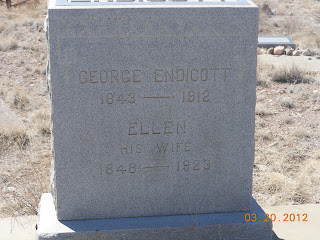As we traveled into the mountains, we passed through Kingston, NM, another mining town of the 1880's that still has a few residents. It had a reputation for being wild and woolly. The Percha Bank (first picture) has been restored and is now a museum that is open by appointment. The next picture is the historic Black Range Lodge. The historic district of Kingston features several buildings and the town bell which was made from ore from the local mines.
From Kingston to Emory Pass, the road gains nearly 3000 feet in altitude over nine miles. The viewpoint at the top of Emory Pass is about 8000 feet and the views were magnificent. It was a beautiful, clear day to be at the top of the world.
Amazing scenery of mountains, valleys and Caballo Lake over 50 miles to the east. It is beautiful, rugged and remote country. An extensive trail system offers pleasant hikes through the forests.
We were back to the town of Hillsboro before we saw these deer.
We enjoyed lunch at the 120 year old General Store (now a restaurant) in Hillsboro - another mining town. It was founded in 1877 when gold and silver were discovered nearby. Today it is a well-known community in NM of writers, artists. ranchers and miners. The 1892 Union Church, an Episcopal church, is still in use today. At one time, Hillsboro was the county seat but Hillsboro lost that designation in 1938 when the county seat was moved to Hot Springs (T or C). There are still ruins of a courthouse and jail and a few other historic buildings that can be seen as you drive through this quaint town. The present day post office is in the original building which was built before 1893. Bill took a few minutes to visit with the postmaster.
Diverting from our original route, we took a side trip to Lake Valley, a ghost town. It was named in 1878 for the ancient lake beds nearby. This silver mining town had a population of 4000 people during its heyday. Today, Lake Valley is cared for by the Bureau of Land Management.
BLM has established a walking tour of the town site. The tour begins at the 1904 schoolhouse (last picture) and includes the restored St. Columbus Episcopal Chapel, some homes and railroad buildings with some mining equipment. The town was devastated by the 1893 silver panic and the 1895 fire which destroyed main street. The post office closed in 1954 and the last resident left in 1994. Lake Valley was the location of the Bridal Chamber Mine, one of the richest veins of silver ever discovered.
Just across the highway from the town site is the town's cemetery. This cemetery is the most fascinating we have seen. There were very primitive headstones and grave sites alongside newly placed headstones.
These were some of the newer headstones. It appeared that family members had been working to mark and preserve this sacred place.
Worn and weathered headstones were scattered around this old, old cemetery.
We wondered to ourselves if there are even records for this cemetery. How sad but it may be likely that records for this era do not exist.
































No comments:
Post a Comment